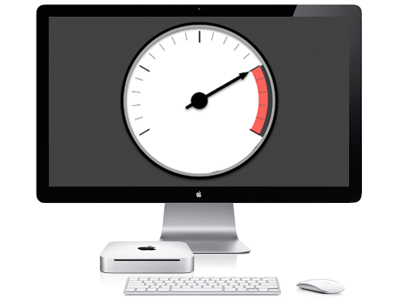 Yesterday, we talked about speeding up your Windows PC. Today, we'llexplain how to speed up a Mac. A few years can take a noticeable toll on any computer, but luckily there are some tips and tricks that can help bring your Mac back up to speed.
Yesterday, we talked about speeding up your Windows PC. Today, we'llexplain how to speed up a Mac. A few years can take a noticeable toll on any computer, but luckily there are some tips and tricks that can help bring your Mac back up to speed.
Reduce the Number of Startup Items - The more programs trying to start up while OS X initializes, the slower everything will be. From the Apple Menu, go to System Preferences > Accounts > Login Items. Select any items you don’t need and click the minus (-) sign to remove them.
Update your Apps & OS X - Often, software updates fix bugs and glitches that could be slowing your computer down. Check for any software updates that may be available for the version of OS X your computer is running on. You can do this by clicking the Apple icon in the upper-left side and selecting App Store from the drop-down menu.
Remove unnecessary dashboard widgets - If you have OS X 10.4.2 or later, use the Widget Manager: go to the Dashboard and open the Widget Bar by clicking the plus (+) sign in the corner. Click Manage Widgets and then either deselect widgets to disable them or, if they’re third-party widgets, remove them completely by pressing the red delete button, which is a circle with a line through it. Click OK to confirm.
Repair disk permissions - Go to Applications > Utilities > Run Disk Utility and select your startup disk. Then select First Aid and click Repair Disk Permissions. When running this procedure, your computer will search the permission settings on your hard drive to make sure files are accessible only to the users and applications that have permission to do so. Be sure to restart your computer after running disk repair.
Remove unused languages - If you use Mac OS X, download a free program called Monolingual. With OS X, much of your computer’s hard disk is devoted to virtual memory and gets eaten up by language-availability software. Monolingual will allow you to remove languages you don’t use in order to free up space.
